Been wanting to know more than the average Joe about Wasabi?
like...
~~~
What is it? Does it have any health benefits? Is it real or imitation?
and
(the often asked and hotly debated...)
Is it O.K. to mix it in your soy sauce when eating sushi?
So, what is Wasabi?
"Wasabia japonica" or sometimes called "Namida" which means "tears", is a member of the Brassicaceae family of plants. This includes broccoli, cauliflower, and cabbage as well as horseradish and mustard.
It is considered a native plant of Japan, although China now claims that it is native to there as well.
It is used mainly as a condiment and is most popularly associated with being eaten with sushi. It has a very strong, pungent flavor which may be considered "hot", but not in the same way as capsaisin in hot peppers produces heat.
It produces vapors that affect the nasal passages to produce the "burn" as opposed to a capsaicin heat which tends to burn the tongue.
Whereas wasabi's burn can also be alleviated by drinking something, a capsaisin (pepper) burn cannot be alleviated the same way.
Grows naturally in certain mountain stream environments in Japan
Wasabi grows naturally in a specific environment and prefers gravel beds of mountain streams. Due to the fact that the supply of the wild, uncultivated variety is limited and that growing it in a cultivated environment is very difficult, it tends to be expensive and is difficult to find outside of Japan. The best roots are also more than four years old and 4 - 6 inches long which just further adds to its unavailability.
Because the demand for real variety is high, Japan imports a large amount of it now from New Zealand, Taiwan and China.
There are also a few growers who are successfully cultivating it in North American too now.
Here's a cool thing. I've found where you can get wasabi plants. So if you have a green thumb and want to try to grow a plant on your own, you can. I haven't done it yet but if you do, leave a comment at the bottom of this page and let me know how it worked out for ya. I'd like to know!
Most Commercial Wasabi Powder or Paste is Imitation
Because of the limited supply of real root, most commercially available wasabi powders and pastes actually contain wasabi ingredients that are not from the real root, but instead is made from a combination of:
- European Horseradish root (armoracia rusticana)
- mustard
- starch and
- green food coloring
Although the taste is similar, the difference is easily distinguishable by those who have had the real thing or eat it frequently.
To identify imitation powder, look for keywords like "prepared wasabi in tube" (picture on left above) or "Japanese horseradish powder" (picture on the right above). The words "Real" will normally not be on these versions.
Both of these are NOT made from the real root, but in their defense, to the 99.9 % of Americans who are consuming sushi in sushi bars this is the norm as it is usually what they are use to and are being served. You can get the most popular versions of this here at amazon.
Getting Real Wasabi root products
To get real powder or paste, look for keywords like "100% real wasabi paste" (like in the picture above). This brand is actually made from the real root that has been cultivated in the U.S. You can sometimes find real root powders and pastes in your local Japanese grocery, but if you can't then you can obtain some here at catalina op (my sushi grade fish provider).
Getting the Real Root
If you really want to try real home ground fresh wasabi root (make sure to get a sharkskin grater if you decide to get some though), you may can ask your local Japanese grocer if he or she ever gets any in. If they don't or can't get any in for you, then you can get it here on amazon when they have it in stock. It is pricey though. This is just further proof of how expensive and difficult this root is to get.
If you do get your lucky little hands on fresh wasabi root, you will have to grind it properly. See below.
How to properly grind your root:
- Peel the root back a couple of inches from the top.
- Hold the bottom of the root and scrape on the sharkskin board in a slow circular motion.
- Never use a regular grater; it will lose its heat and will be chunky rather than moist and sticky. Maybe a little mushy.
- Eat the freshly grounded root within 15 minutes or it will start to lose its flavors.
- If you go ahead and swipe it onto the meat of your nigiri sushi and place it on top of the sushi rice or swipe it onto the sushi rice of your maki roll and roll it up, that will keep the it from continuing to be exposed to the air and will allow it to hold its flavors longer.
Which is Better. The Powder or Paste?
Most people recommend getting the paste if possible. If you can't get any or you still prefer the powder, then you will have to mix it properly before use.
How to mix powdered variety:
- Put about a tablespoon of powder in a small bowl (about the size of a small Japanese tea cup).
- Add a small amount of boiling water (my Japanese mother actually adds green tea instead) to the powder and mix it. Start with 1 teaspoon, mix and then add another teaspoon or more if needed till it is thick and pasty looking and sticks to the bottom of the bowl.
- Immediately turn the bowl over and let it "steep" for about 5 - 10 minutes before using it. My mother swears you have to do this or you will be committing a mortal wasabi sin if you don't :-)
Should you mix Wasabi into your Soy Sauce when eating Sushi?
This is probably the most hotly debated subject concerning proper sushi etiquette that I know of. And I actually discuss this quite a bit on the sushi bar etiquette page here and here. Visit those pages for a lot deeper discussion of this subject.
With that said, I will talk about it a little here too.
The reason that it is "frowned" upon, is that it is kind of an insult. I've seen it associated with terms like it is "Impolite", and "Improper", and shows "Disrespect" to the sushi chef.
Sushi chefs (especially the itamae or head sushi chef) spend years and years and years perfecting their craft and to dunk their perfectly made sushi in your soy sauce and wasabi concoction just kind a hurts their feelings.
With that said, the majority of real Japanese people that I know, me, my mother, her brother and all her friends included, do add it to their soy sauce.
Woooooooow. You say. Hold on there Tiger. That's Sushi blasphemy you are speaking!!!
Anyway, the so called "Experts" say never to add it.
Hmmm. Well, here's what I have to say about that. I am actually basing what I am saying on actual experience living with a Japanese mother and eating with her Japanese friends and relatives, not on what I got out of book, read online or heard somebody else say.
From what I can gather, REAL Japanese people do whatever the heck they want and ignore the "Experts".
There ya go. I said it.
With that said. Here's what you can do.
You know what the "proper" sushi etiquette is. If you want to follow it, then absolutely do so. Its your choice.
But if not, and you want to do what you want to do then add it. Just try not to go overboard. Add just a little. Don't dump the whole wad of it in your soy sauce and then shed tears of joy every time you take a bite of your nuclear level sushi :-) That can, honestly, get a little tacky.
Or if you want to split hairs here and be a little more proper but still have your wasabi and eat it too, then take your chopsticks, pick up a little of it, and swipe it onto your sushi before you dip it in your "pure" soy sauce. This is more accepted.
I need to mention this too, now. If you do happen to get freshly ground root, then I would not mix that into my soy sauce, but would rather do like in the previous paragraph and wipe a swipe onto my sushi before dipping into pure soy sauce. Real root is a treat and shouldn't be diluted like that.
Are there any Health Benefits?
Wasabi is known to have antibacterial properties and is also rich in Vitamin C, B6, protein, fibre and the minerals calcium, potassium, manganese and magnesium.
It also stimulates the production of saliva and aids in digestion.
It also contains compounds called glucosinolates which is converted by enzymes into ITC's (isothiocyanates) if water is present when it is torn apart by chewing or being ground up.
There is current research that is starting to show that it may be useful in controlling seasonal allergies and asthma and also may inhibit platelet aggregation (blood clotting) which could have applications in the treatment of heart attacks due to the ITC's.
There is also a growing base of evidence that ITC's may work against cancer cells.
Like this Page?
|
|
Follow me on Pinterest

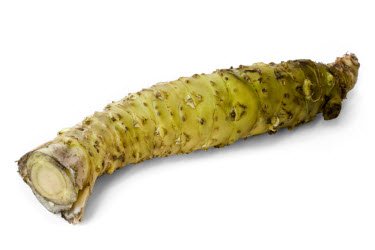
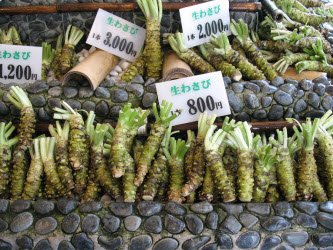
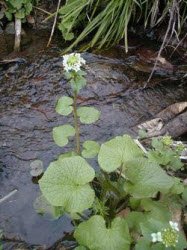
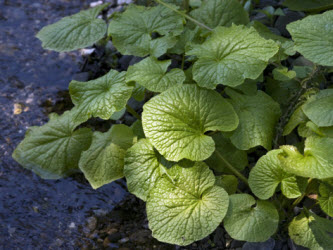

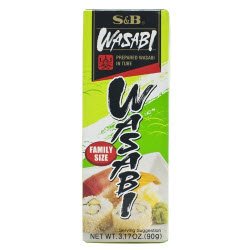
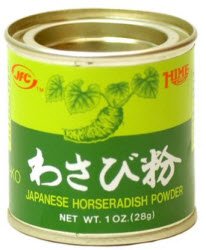
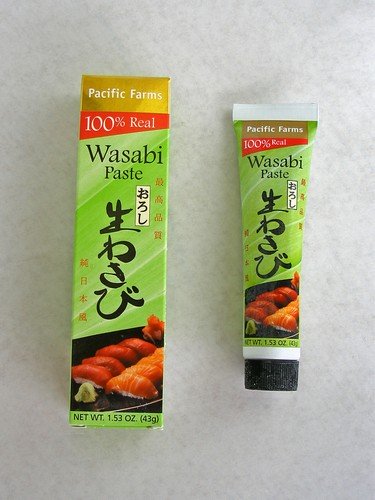
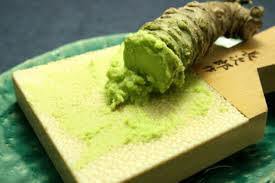
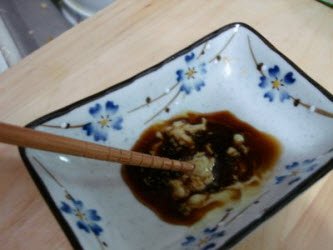







New! Comments
Have your say about what you just read! Leave me a comment in the box below.